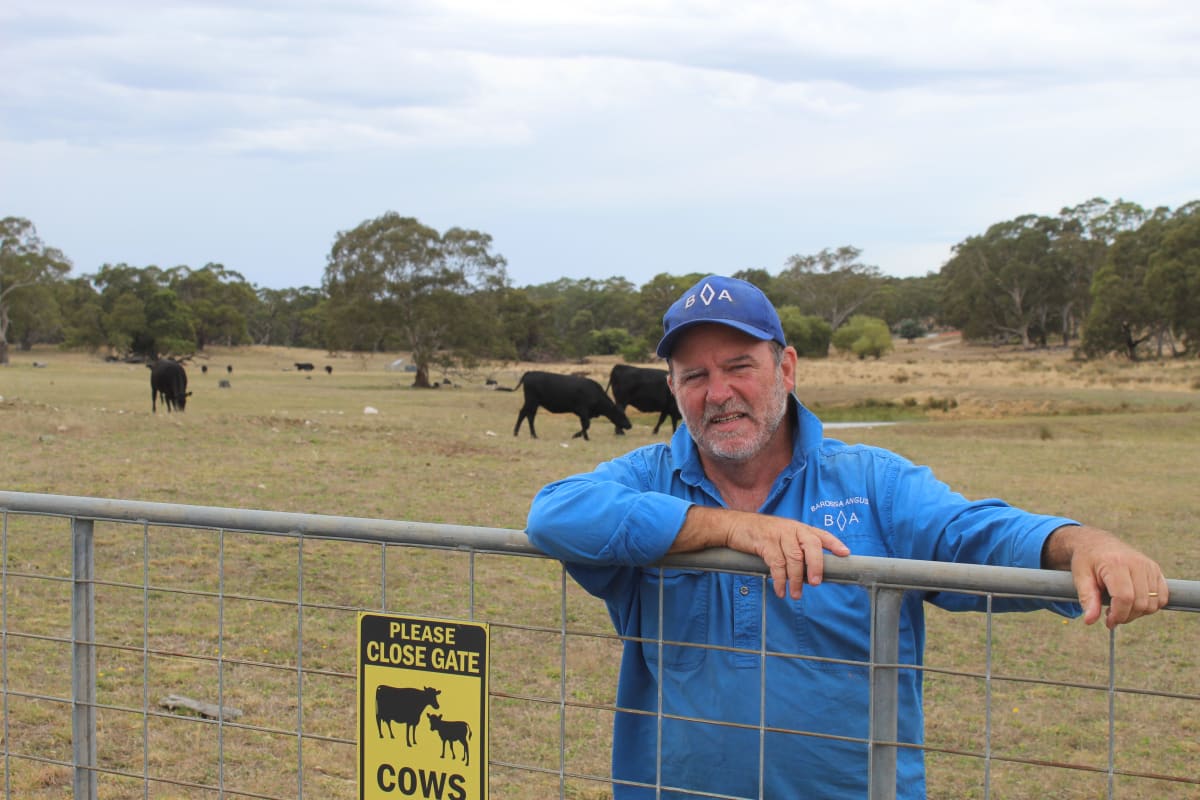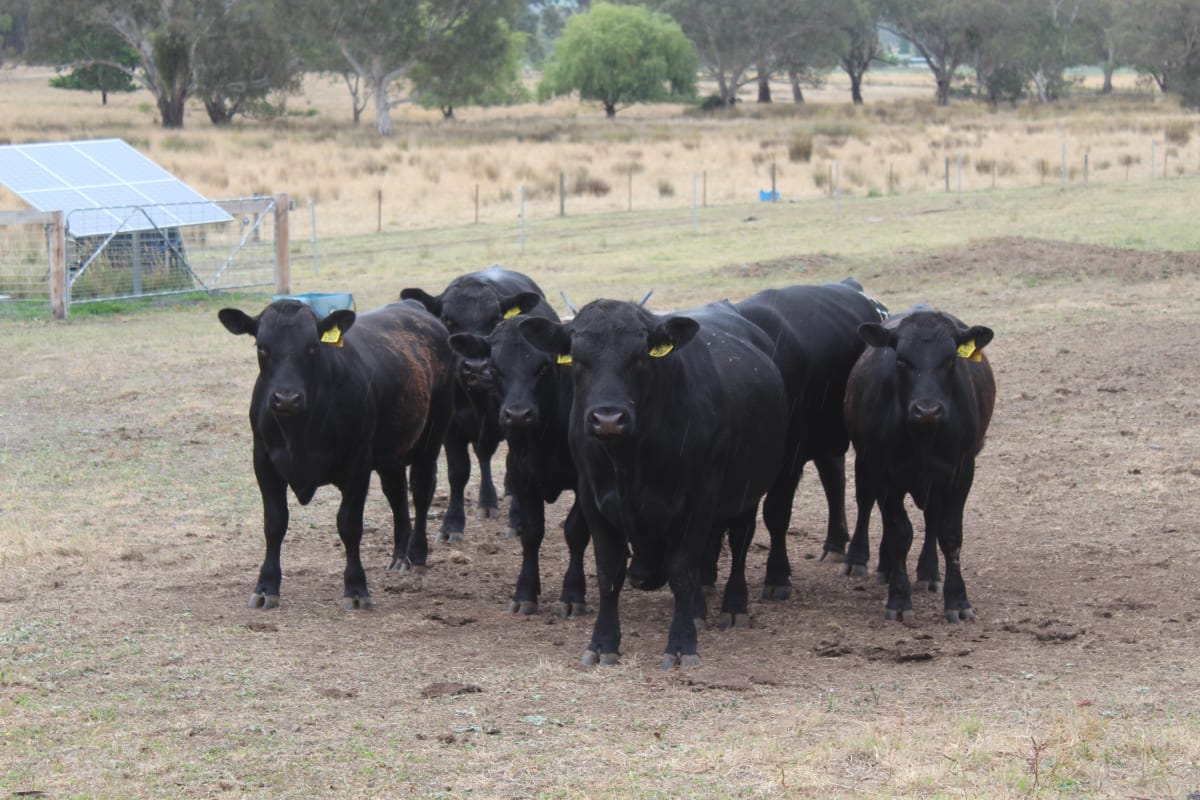Breeding quality Angus cattle on the Barossa’s doorstep
SITUATED at Mount Crawford is a small but thriving Black Angus producer with a focus on breeding high-quality cattle that will go the distance. Barossa Angus began more than 20 years ago, when Julian and Jane Maul made the move to South Australi...

SITUATED at Mount Crawford is a small but thriving Black Angus producer with a focus on breeding high-quality cattle that will go the distance.
Barossa Angus began more than 20 years ago, when Julian and Jane Maul made the move to South Australia from Sydney with the goal of opening a country guesthouse.
They purchased a property at Lyndoch and built Abbotsford Country House, which they ran for 19 years.
While running the guesthouse, they began breeding cattle and started a paddock to plate business.
“We had been predominantly vealer producers when we first started running cattle and then we started to breed Black Angus cattle and that’s what we sold with our paddock to plate business,” Julian said.
Their cattle production led to a small side hustle of creating traditional Christmas puddings to be sold at local markets and through online orders, which Jane still runs to this day.
“We would process some of our beef for our own consumption… but all the suet from that would be used for the production of Christmas puddings,” Julian said.
“We’ve been doing that for 20 years.”

When the paddock to plate venture became too physically demanding, combined with running the guesthouse, the focus shifted to seedstock production.
Julian realised there was nowhere in the Barossa and Hills regions that sold the best Angus genetics, so they began selling bulls privately and have continued down that path for about the past 10 years.
They have now sold their Lyndoch property and ceased operating the guesthouse and have been operating out of their Mount Crawford property for the past two years.
“We’re not a big breeder, but our focus has always been about breeding quality on our doorstep,” Julian said.
“You don’t have to go down to the southeast. There’s some fantastic studs down there, no doubt about it, but I just felt that someone should be doing it up here.”
While they no longer run the guesthouse, the couple have still been able to utilise the Lyndoch property.
The cattle are solely pasture fed and they split time between the two properties, ensuring they are bred under tough conditions.
“We winter up here [at Mount Crawford] but we summer at Lyndoch,” Julian said.
“Lyndoch is hot, dry country. Up here it’s cold, it’s wet… so there’s nothing cushy about the way we run our bulls.
“That gives us a lot of confidence that our bulls can go into any kind of environment.”

Julian explained that they effectively sell their bulls to three different markets.
There is the heifer market for producers who want an easy carving solution for their heifers, plus the breeders who keep cows and are after bulls that will focus more on growth and carcass qualities.
Finally, there are the breeders who want more of a balanced option.
Julian said breeding decisions are based on the cow and it is about finding a bull that suits that particular cow.
“We inseminate on the basis of the cow’s qualities and what we can build from her,” he said.
“Every bull is effectively a consequence of a breeding decision where the focus is, in the first instance, on what the cow brings and then we build on that with a sire selection.”
Like any industry, cattle breeding, and more specifically Angus breeding, continues to evolve and Julian said the science is advancing at a rapid pace.
“The tools that we now use, not just simply for making breeding decisions but also to verify an animal’s parentage and the potential breeding outcomes of its progeny, along with being able to identify any potential genetic defects… it’s a very different world than it was 10 years ago,” he said.

“It may not necessarily be what you had anticipated the outcome of a particular breeding decision was, but we’re actually now better able to forecast the breeding outcomes.”
All of these developments allow potential buyers to make much more informed and accurate decisions.
“When you go to a bull sale and you see that the animal has been parentally verified as well as genomically advanced – in other words the genomic workers have been able to enhance or verify what the true breeding outcomes are likely to be – it gives the buyer greater confidence in the bull that they’re buying,” Julian said.
There are still challenges, with the agricultural sector unable to escape the cost-of-living pressures.

However, Julian believes the cattle, and particularly Angus industry, will continue to prosper, with the Australian beef sector inspiring confidence internationally, with overseas breeders also very interested in Australian genetics.
“Angus is a breed that generates a premium and part of that premium for the producers is we have the genetic diversity that allows us to basically put an Angus bull into any breeding system that you might have,” he said.
“No matter where you are and no matter what market you’re delivering to, there’s Angus genetics that will meet your market.
“Unfortunately, there are a lot of other breeds that just don’t have the sheer scale or the breadth in the scale of our genetic pool.
“It’s just enormous and it wouldn’t matter whether you’re someone from the Victorian high country to far northwest Queensland, there are Angus genetics that will meet your production system.”
Barossa Angus might not be the largest breeder but its passion for quality is what sticks out.
“We focus on producing correctly verified, genomically enhanced, structurally sound bulls that will go the distance,” Julian said.





